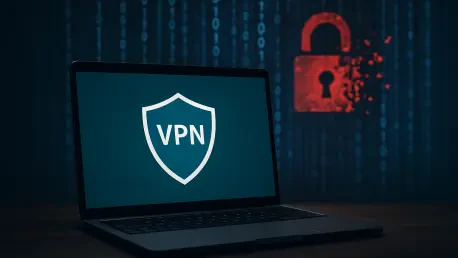In an era where digital privacy is constantly under threat, data breaches have become an alarming reality for millions of internet users across the globe, with sensitive information often exposed due to inadequate security measures on websites and services. Reports indicate that these incidents are not only frequent but could escalate further as new regulations, such as age verification laws, push websites and third-party services to store more personal data. This raises serious concerns about how well these entities can safeguard such information. Many turn to Virtual Private Networks, or VPNs, as a potential shield against prying eyes, hoping they can prevent their data from falling into the wrong hands. While VPNs are indeed powerful tools for enhancing online privacy by blocking tracking from internet service providers and advertisers, they are not a silver bullet against data breaches. This article delves into the capabilities and limitations of VPNs in this context and offers practical steps to minimize the risk of personal data exposure.
1. Understanding the Role of VPNs in Online Privacy
A VPN serves as a critical tool for protecting online activity by encrypting internet traffic and masking a user’s location, effectively preventing internet service providers and advertisers from monitoring browsing habits. This encryption creates a secure tunnel for data, ensuring that external parties cannot easily intercept or decipher the information being transmitted. For individuals concerned about being tracked while browsing, a VPN provides a significant layer of anonymity by hiding the real IP address and presenting a different one based on the chosen server location. This can be particularly useful when accessing public Wi-Fi networks or evading geo-restrictions on content. However, while these features are invaluable for maintaining privacy in transit, they do not address the vulnerabilities that arise once data is shared with websites or services. The distinction between protecting data in motion versus data at rest is crucial for understanding the scope of a VPN’s protective capabilities.
Even with a VPN in place, the moment personal information is entered into a website—whether for a purchase, account creation, or form submission—that data is no longer under the VPN’s protection. Websites store this information according to their privacy policies, which may include selling or analyzing it for various purposes. For instance, streaming platforms can still access payment details and email addresses provided during sign-up, regardless of the VPN hiding the user’s location. This means that if a website suffers a breach, the exposed data could include everything voluntarily submitted by users. The reality is that VPNs cannot anonymize information once it has been shared, leaving it vulnerable to exploitation if the hosting service lacks robust security measures. Recognizing this limitation is essential for users who might otherwise overestimate the protective reach of VPN technology in all online scenarios.
2. Limitations of VPNs Against Data Breaches
Data breaches remain a persistent threat, even for users employing VPNs, as these tools cannot safeguard information that has already been handed over to websites or services. When personal details such as credit card numbers, email addresses, or login credentials are submitted, they become part of the website’s database, subject to its security protocols and privacy practices. If those protocols are weak or if the site becomes a target for hackers, the information can be compromised in a breach, regardless of the VPN’s encryption of internet traffic. Many services, especially those requiring user accounts, demand valid identifying information to function, leaving little room for anonymity. This vulnerability underscores that while VPNs excel at securing data during transmission, they are powerless against breaches that occur on the servers where data is stored after submission.
Furthermore, the nature of modern online interactions often necessitates sharing sensitive information, amplifying the risk of exposure in the event of a breach. For example, e-commerce platforms, social media sites, and subscription services routinely collect personal data as a condition of use, storing it for operational or marketing purposes. A VPN might obscure a user’s location or browsing habits from these platforms, but it cannot prevent the platform from retaining and potentially mishandling the data provided. Historical incidents have shown that even major companies with substantial resources can fall victim to breaches, exposing millions of users’ records. This highlights a critical gap in protection that VPNs cannot bridge, emphasizing the need for additional strategies beyond relying solely on such tools to secure personal information in an increasingly connected digital landscape.
3. Practical Steps to Minimize Data Exposure Risks
Reducing the risk of data leaks requires a proactive approach, starting with scrutinizing privacy policies before sharing any personal information on a website. Users should carefully read how their data, especially payment details, will be handled and stored post-transaction. Additionally, caution is advised when sites request personal information that seems irrelevant to the service offered, as this could indicate questionable data practices. If trust in a site is lacking but a transaction is necessary, using temporary credentials like a disposable email, a temporary phone number, or a one-time payment method can offer some protection. However, users must be aware that such measures might complicate account recovery or renewals if access to these temporary options is lost. These initial steps empower individuals to make informed decisions about where and how much of their data is shared online.
Beyond initial caution, leveraging specific tools can further enhance data security and limit exposure across multiple platforms. Employing a password manager to create unique, strong passwords for each site is a vital practice, as it prevents a single breach from compromising accounts elsewhere. Additionally, tools like ad blockers and private browsers can help limit online tracking by third parties, although they, like VPNs, do not protect against data breaches directly. If a breach does occur, knowing how to respond effectively is crucial—following recommended tips to mitigate damage, such as changing passwords and monitoring accounts for suspicious activity, can make a significant difference. Ultimately, no tool can fully replace personal vigilance, and maintaining a cautious mindset when navigating the digital space remains the cornerstone of protecting sensitive information from unauthorized access.
4. Reflecting on Data Security Strategies
Looking back, the journey through understanding VPN capabilities revealed that while these tools are instrumental in shielding online activities from unwanted surveillance by encrypting traffic and masking locations, they fall short when it comes to preventing data breaches on websites where personal details are stored. Numerous instances demonstrated that once information was shared, whether for a purchase or account access, it became vulnerable to exposure through server-side security failures, regardless of the VPN’s protective measures. This realization underscored the importance of not solely depending on technological solutions but also adopting a mindset of caution and responsibility when interacting with online platforms that require sensitive data.
Moving forward, the focus should shift to actionable strategies that complement the use of VPNs and other privacy tools to bolster overall data security. Regularly reviewing and updating security practices, such as using unique passwords and temporary credentials where feasible, can significantly reduce risks. Staying informed about the latest breach response techniques and maintaining skepticism toward unnecessary data requests will further empower users to protect their digital footprints. As data collection continues to intensify, taking these proactive steps ensures a more resilient defense against the ever-present threat of breaches, paving the way for safer online experiences.









